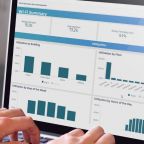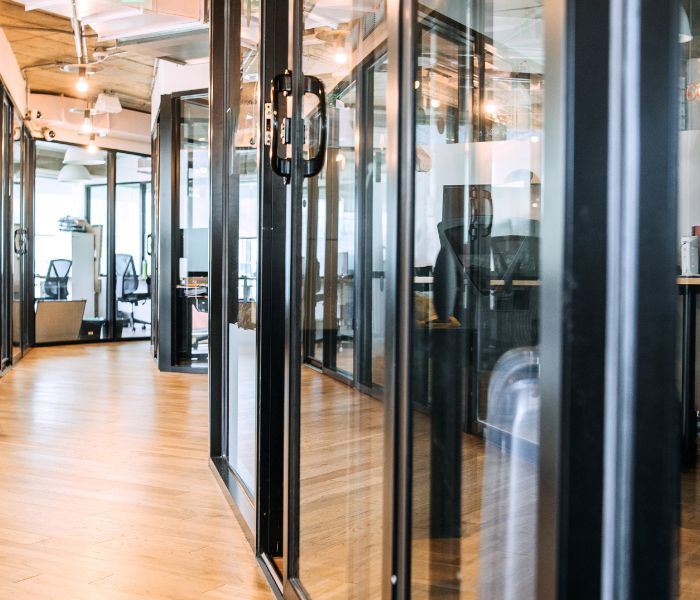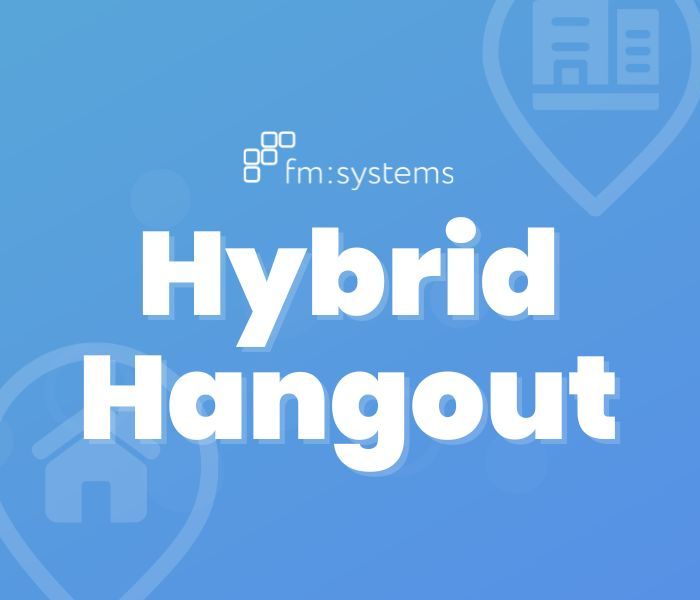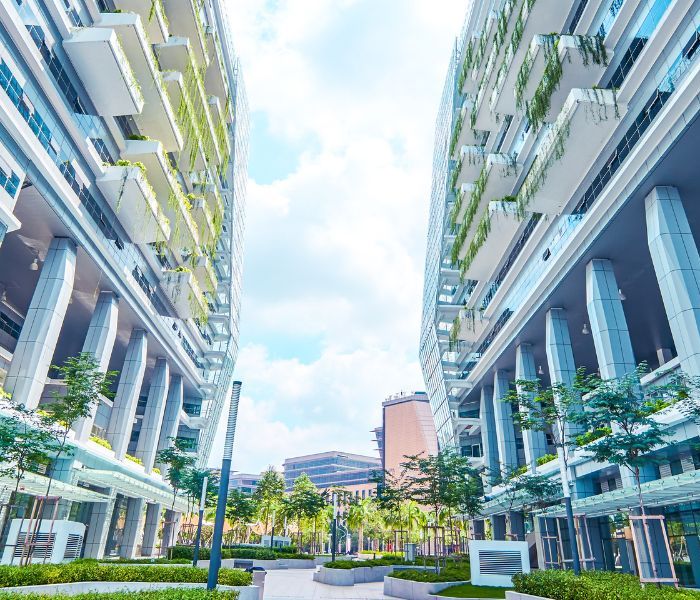In the past, understanding utilization has always been a problem for real estate executives. Today, that challenge looms larger than ever as businesses attempt to navigate a new hybrid work world. That’s why many businesses are adopting workplace sensor technology. The trend accelerated during the global pandemic due to the real-time information sensors can contribute to office design, safety and sanitization.
FM:Systems recently presented a session titled Sensors 101, and during the live webcast, we asked attendees about their current sensor usage. Nearly 6 in 10 (59%) respondents already use at least one type of sensor in the workplace.
We also asked why attendees were interested in workplace sensors. They shared a variety of primary goals for sensor technology:
- 36% Want to understand space utilization better
- 21% Are interested in how office sensors can help manage desk/room reservations
- 19% Wish to use sensor data to optimize the real estate portfolio
- 13% Want to increase energy efficiency
- 10% Need to ensure workspace areas are cleaned after every use
What is a sensor?
A sensor can be anything that enables your organization to collect data about a space and its usage and characteristics. Sensors can provide a stream of data for analysis and greatly expand your understanding of how people interact with your workspace and other things.
Today, we’ll describe four common types of workspace sensors and how to use them:
1. Desk sensors
A desk sensor is also referred to as a utilization sensor. Desk sensors provide detect the occupancy of each space via movement and heat, driven largely by passive infrared technology to detect. Data aggregated from desk sensors provides visibility into real-time space utilization.
Desk Sensor Deployment: Each desk sensor is usually to a desk or workspace on a one-to-one basis. Generally, a desk sensor is place on or under a desk, or attached on the wall within a cubicle or office space. These are battery-powered sensors that can often last 10, 20 or even 30 years with modern battery technology.
Desk Sensor Use cases:
- Learn what spaces are not being utilized well, so they can be repurposed.
- Adopt co-working strategies, including hybrid workforce and hoteling, in order to rent and share unused space as employees are coming back to the office.
- Control operational costs for lighting and HVAC by using desk sensors to identify when a space is not in use and automatically adjusting the thermostat or lights.
- Integration with reservation and booking application can automate check in/check for office or conference room reservations.
- Real-time occupancy data identifies spaces that have just been used, triggering a work order for cleaning and sanitization.
- If operating at reduced capacity, sensor data can trigger automated emails or SMS messages to alert key individuals when spaces are nearing capacity or at capacity.
2. Environmental sensors
Environmental sensors enable organizations to ensure the health and safety of buildings, by measuring environmental factors including:
- Temperature
- Humidity
- Air pressure
- Light
- Noise
- Air quality by VOC (volatile organic compounds)
Environmental Sensor Deployment: Businesses do not need to deploy an environmental sensor in every workspace in order to have an excellent sense of the building environment. A good rule of thumb for deployment is approximately one environmental sensor to 10 desk sensors. Pay some attention to sensor placement. For example, you don’t want take temperature readings right next to a piece of hot equipment like a busy printer station.
Environmental Sensor Use cases:
- Ensure the workplace is well-ventilated to support healthy employees, especially during the pandemic.
- Reduce energy and lighting consumption by tailoring on/off times for lighting and HVAC based on the actual needs of your staff.
- Reduce your corporate carbon footprint by allocating each factor based on real-time demand, rather than theoretical demand.
- Study how temperature, humidity, noise and other environmental factors impact utilization.
- Gain an understanding of how each environmental factor interplays with other factors. For example, data could reveal how temperature and air quality play off one another.
3. Area sensors
Area sensors use thermal, Wi-Fi or computer vision to see people, identify them and pinpoint their location onto a floor plan. Most area sensors keep each individual’s identity anonymous. At FM:Systems, we use computer vision—meaning we’ve trained an AI algorithm to understand and recognize people—and then deployed that algorithm to the sensor. Data collected for analysis gets anonymized.
Deployment: The coverage range of an area sensor is larger than a desk sensor, so you need fewer of them. Sensors are typically installed in the ceiling and look down into a workplace. Because they remain above the office layout, they are not tied to any particular piece of furniture (like desk sensors) and you can often change the office design without needing to move the area sensors.
Different area sensors have different capture rates, often dependent on their source of power (battery vs. WAN). Sensor sightings vary from real-time continuous to taking a sighting every 5 to 10 minutes. Consider power source carefully—high traffic areas will drain batteries quickly and they will need to be replaced by someone. Battery waste can really add up, adding to sustainability challenges.
Area Sensor Use cases:
- Gain the flexibility to understand all different types of spaces, to count the number of people using each space and to understand where people move before and after using a space.
- Understand neighborhood and team space usage within the office.
- Predict capacity trends.
- Tie real-time area sensors into a space reservation system, and because the sensor can recognize individuals, they can automatically check in for bookings without needing to scan a QR code or launch a phone app.
- Facilitate a way-finding app to help employees navigate the workspace.
- Pull up historical data to see exactly how many people you had in your offices at different points in time.
4. People-counting sensors
People-counter sensors—also known as floor counters—count the total number of people in space, as the name implies. These sensors are useful when you want to know the number of people overall who have entered or left a space, such as a floor, building or room, in real-time. These sensors are very intelligent and count bi-directional movement, so they recognize people walking in and walking out of a space. People-counter sensors achieve 99% or higher accuracy. They utilize camera technology; however, the data is still anonymized. Only metadata flows through to your space management applications—no imagery is stored.
People-counting Sensor Deployment: People-counter sensors should be positioned over an ingress or egress point. These sensors are powered over the network, not by batteries. Up to nine sensors can be stitched together at any point in time so that a body (anonymized) can be tracked moving through all nine sensors.
People-Counting Sensor Use cases:
- Retail: Gain better understanding of how shoppers flow through a store under different layouts/conditions. Measure dwell time in how people linger in certain spaces.
- Higher education: Measure the real-time capacity in a lecture hall or auditorium.
- Queue length: Monitor how long the lines get in stores or cafeterias.
- Office buildings: See how people flow through the common areas of your building such as break rooms and the lobby.
Tailor sensor types to your business needs
Sensors can contribute new levels of understanding about space utilization in the workplace. As you can see, the four different types of office sensors described will provide different types of data, in varying levels of granularity. Most organizations adopting sensor technology will end up using a combination of types to tailor the data gathered to meet their workspace management objectives.
For much more information, watch the on-demand Sensors 101 webcast.











